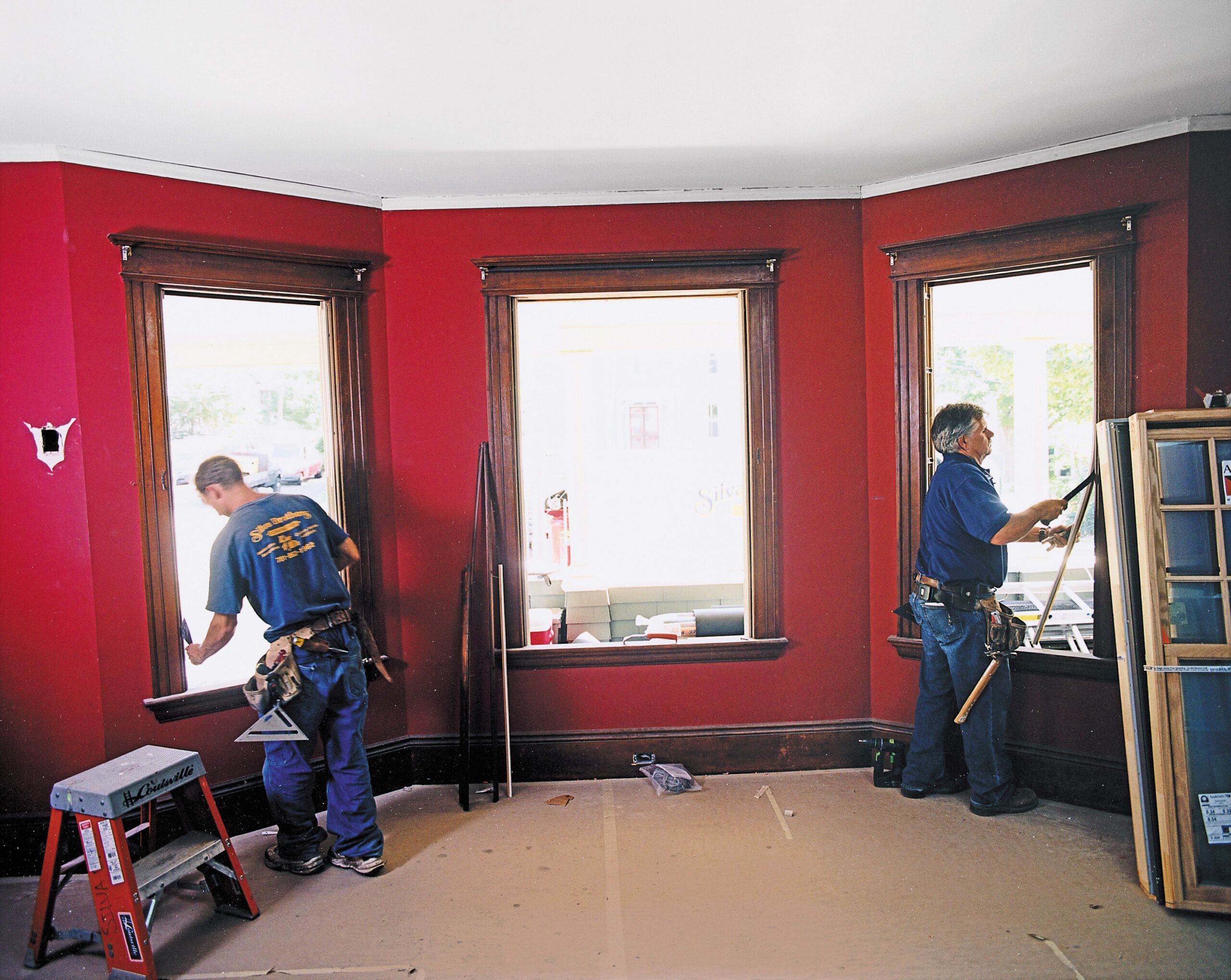Project details
Skill
Cost
Estimated Time
When Maddy Krauss and her husband Paul Friedberg first laid eyes on their 1897 Shingle-style home, they fell in love with its handcrafted turn-of-the-century construction, wide front porch, and massive entry-hall staircase. They were also delighted to find that many of the original architectural details were still intact, including wood paneling, exquisite carvings, stained-glass windows, and an ornate cast-bronze fireplace.
The windows were another story. The originals had been swapped out a decade earlier for low-quality sash kits that were drafty, ugly, and completely inappropriate for the graceful Victorian-era home, which served as the setting for This Old House TV’s fall 2007 project in Newton, Massachusetts. The solution: Call in TOH general contractor Tom Silva and his crew to install energy-efficient replacements.
Because the existing window frames were sound and square, Tom could use insert window replacement units—in this case, Andersen’s Woodwright Insert Replacement Windows, vinyl-clad wood units fitted with energy-saving, low-e insulated glass. These fully-assembled, ready-to-install windows slip right into the existing openings.
When the job was done, the house had beautiful new double-hungs that looked right, worked smoothly, and gave Maddy and Paul one more thing to love about their old house. Here’s a look at how Tom made the switch, with tips for choosing and installing the best replacement windows for your home.
How To Install Replacement Windows
1. Measuring for Replacements
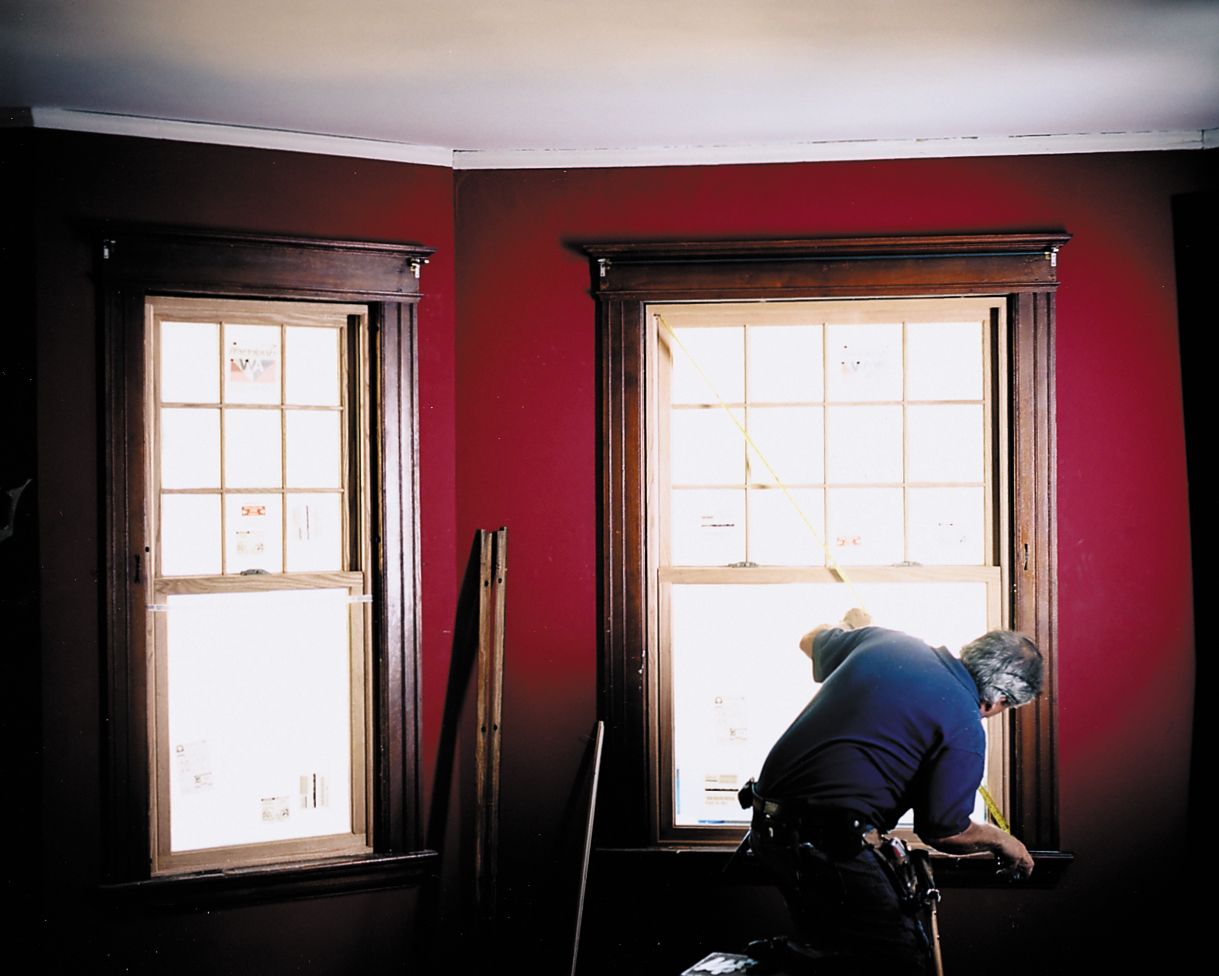
The most important step in the window-replacement process happens long before installation day. It’s when you measure the window dimensions of the existing window frame to make sure you order a replacement unit that’s the right size. Here’s how to do it.
- Start by measuring the inside width of the old window frame, jamb to jamb, in three places—across the top, middle, and bottom. Write down the smallest of the three measurements.
- Next, measure the frame’s height from the top of the sill to the underside of the head jamb in three places—at the left jamb, in the middle, and at the right. Again, record the smallest measurement.
- Check the squareness of the frame by measuring the diagonals from corner to corner. The two dimensions should be the same. If the frame is out of square by 1/4 inch or so, the replacement can be shimmed to fit. Anything more may require adjustments to the frame. If the frame is so out of whack that an insert replacement wouldn’t look right, you’ll need a full-frame replacement.
- Finally, use an angle-measuring tool to determine the slope of the sill—some replacements come with a choice of sill angles.
2. Take Out the Sash
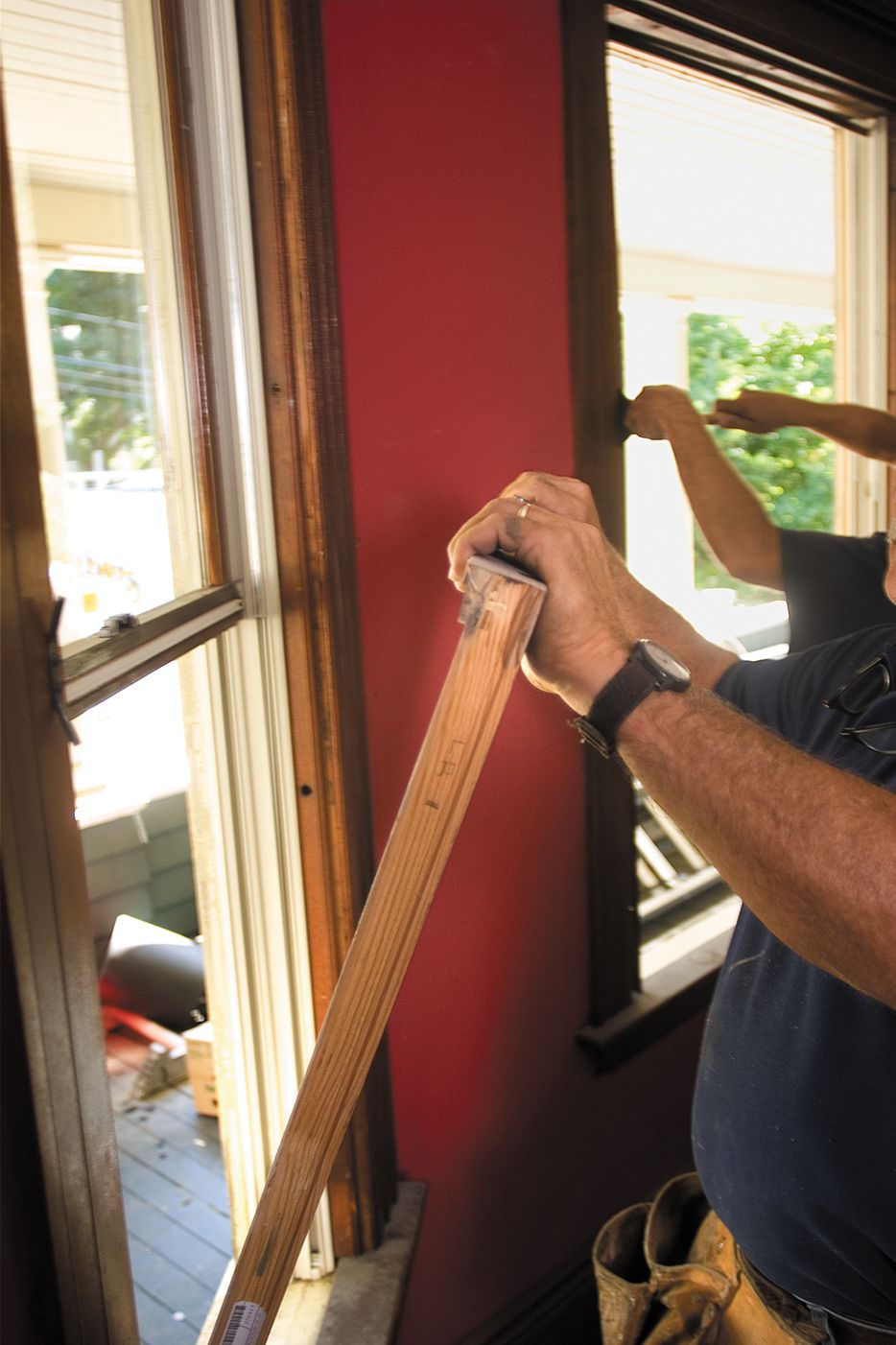
- The first step is to remove the old sash from the window frame. In most cases, you’ll need to pry off or unscrew the interior wooden stops to remove the lower sash. If you’re planning to reinstall the stops, do this job carefully, as they break easily.
- Next, take out the parting beads to free the upper sash. If your windows, like these, were previously fitted with sash-replacement kits, there won’t be any beads. Simply press in on the jamb liners and pull the top of the sash forward.
- Then pivot one side of the sash upward to free it from the jamb liners.
3. Pry Off The Jamb Liners
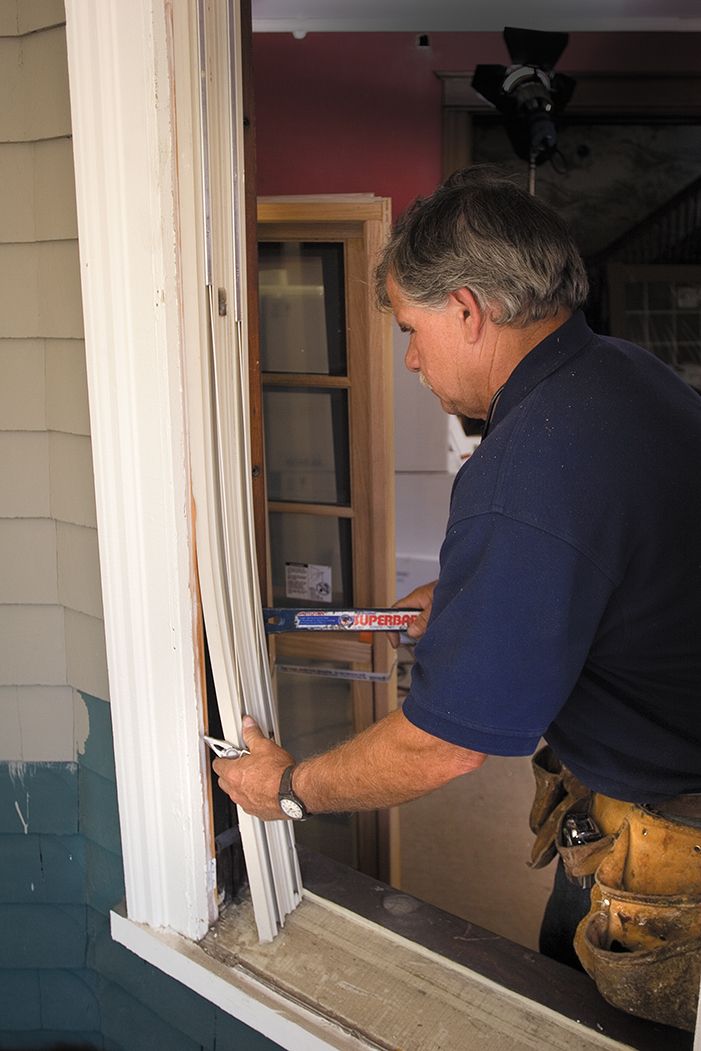
- If the window frame was fitted with vinyl or aluminum jamb liners, use a flat bar to pry them free. In the case of an original window, remove any remaining wooden stops from the window frame.
- Leave the interior and exterior casings intact.
4. Prep the Frame
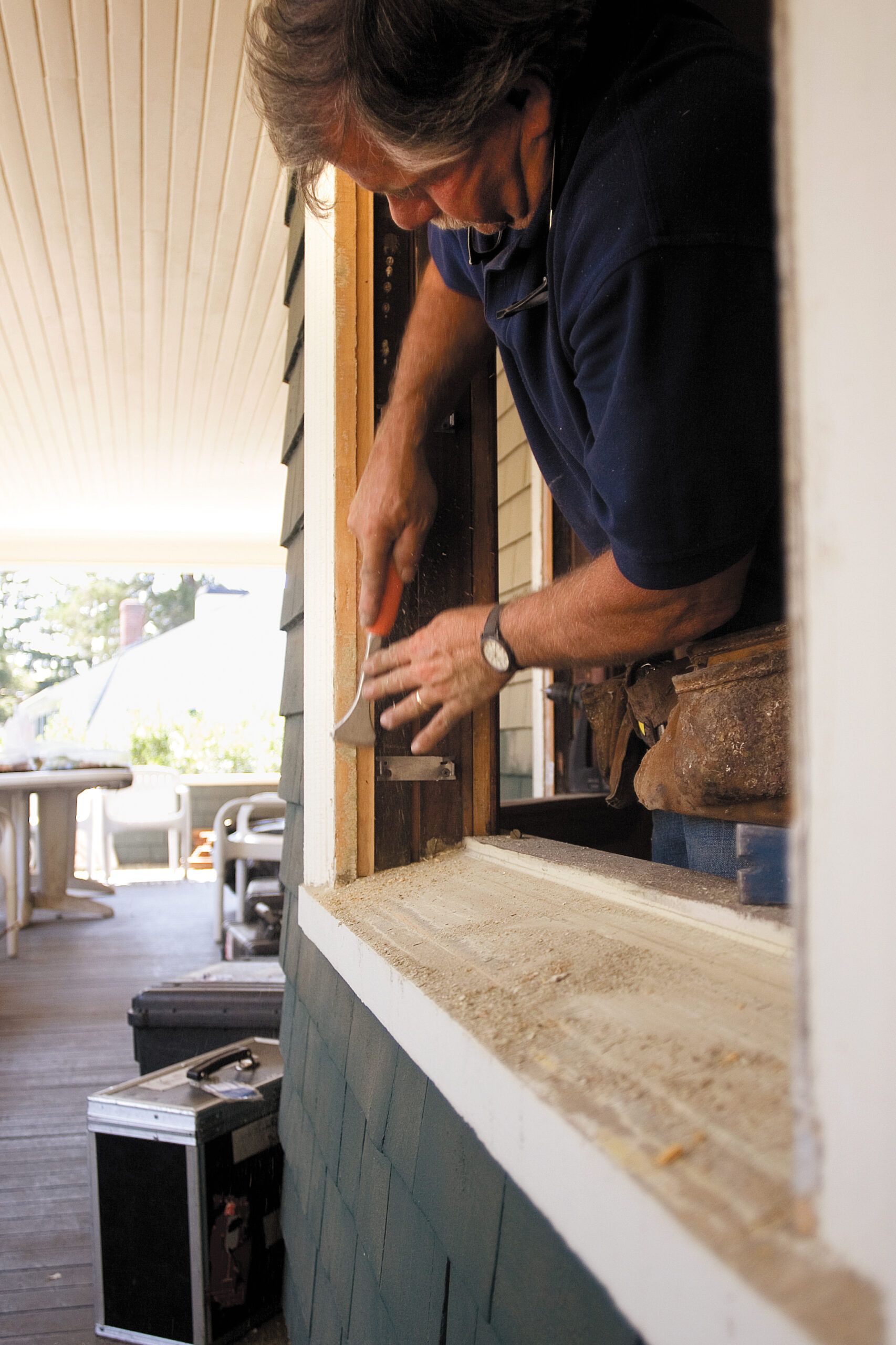
- Scrape off all loose and blistered paint and patch any holes or cracks with an exterior-grade wood putty, such as the ones from Elmer’s or Minwax.
- Then sand the jambs smooth, and prime and paint the surfaces.
5. Remove the Old Sash Weights
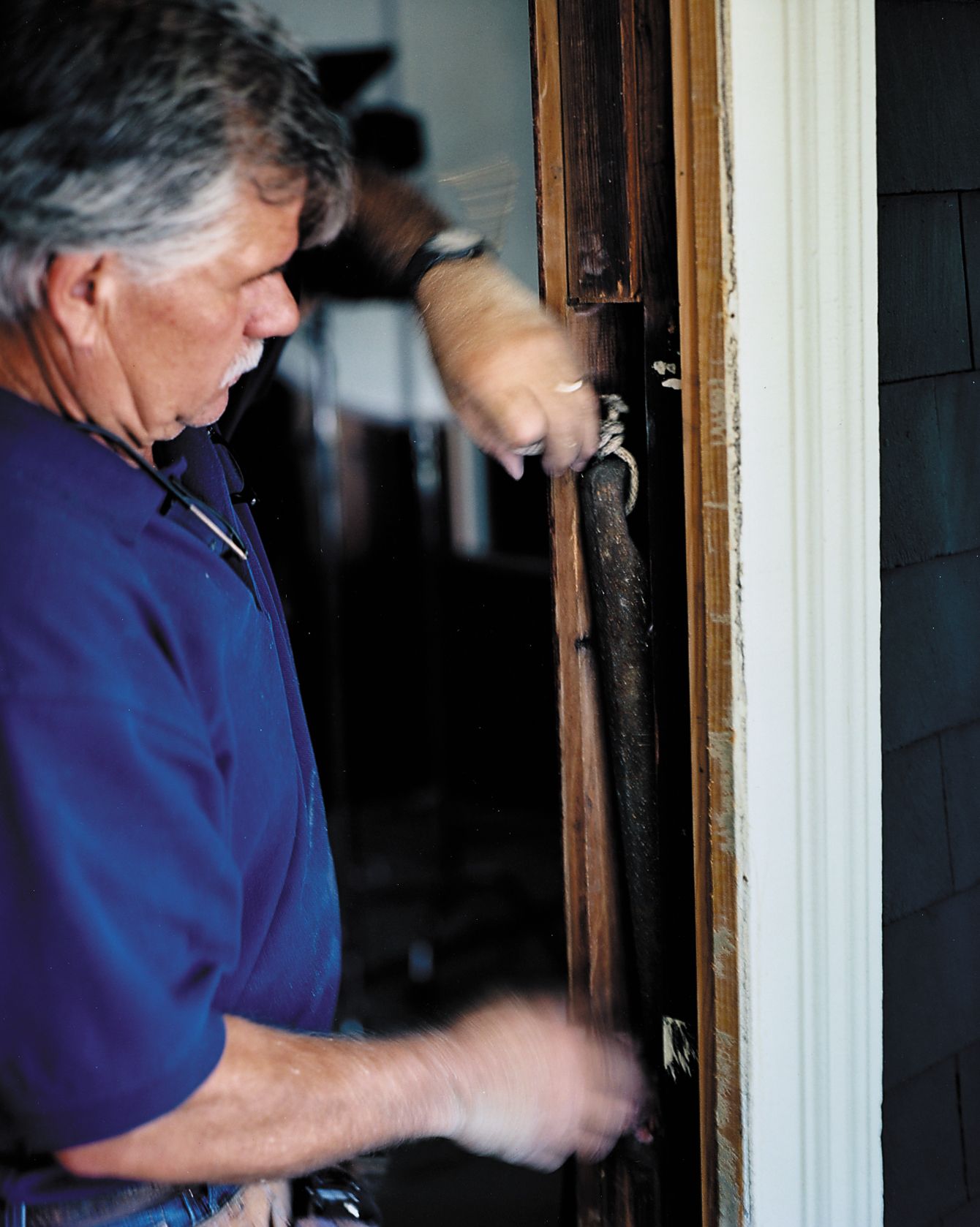
- If the original sash weights are still in place, take this opportunity to remove them from their pockets and insulate behind the window frame.
- Unscrew the access panel on each side jamb and pull out the weights.
6. Prep For Insulation
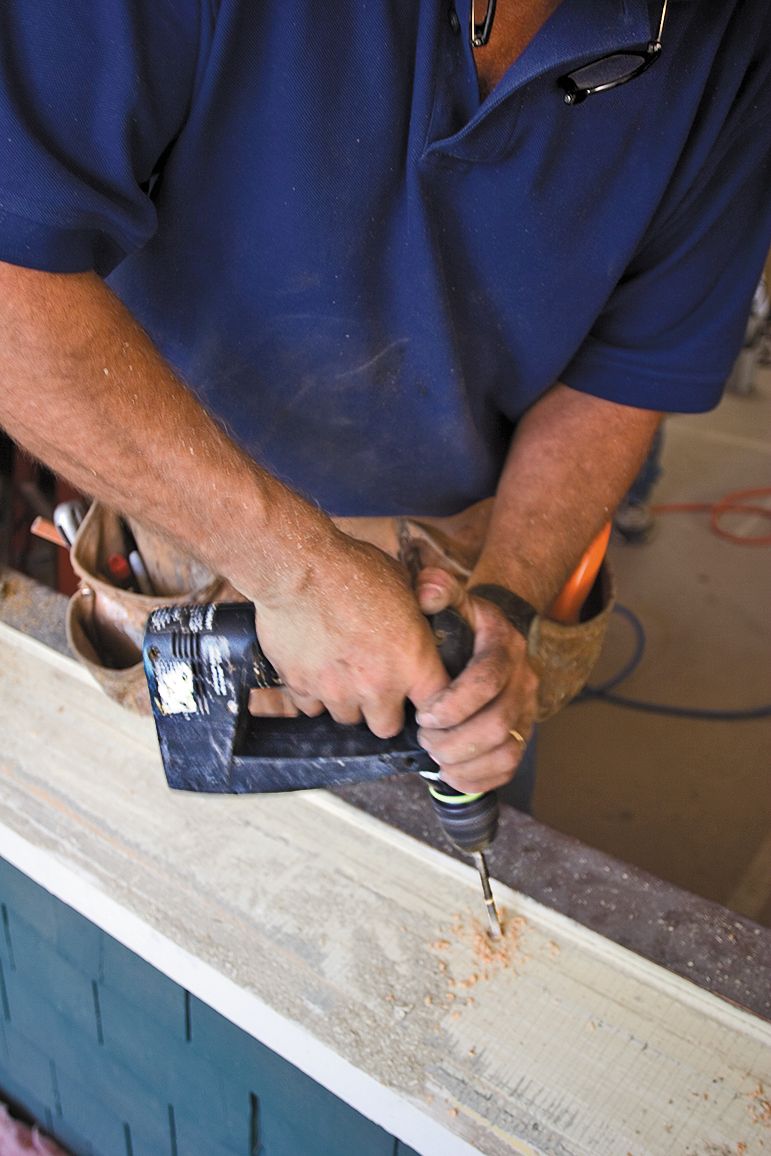
Tom likes polyurethane foam because it’s more effective at blocking air than fiberglass insulation.
- Make sure to use only low-pressure, minimally-expanding foam intended for windows and doors—anything else will bow the frames and keep the sash from working.
- First, pull any existing fiberglass out of the weight pockets.
- Then bore 3/8-inch-diameter holes, one near each end and one in the center, down through the sill and up through the head jamb.
7. Spray in the Foam
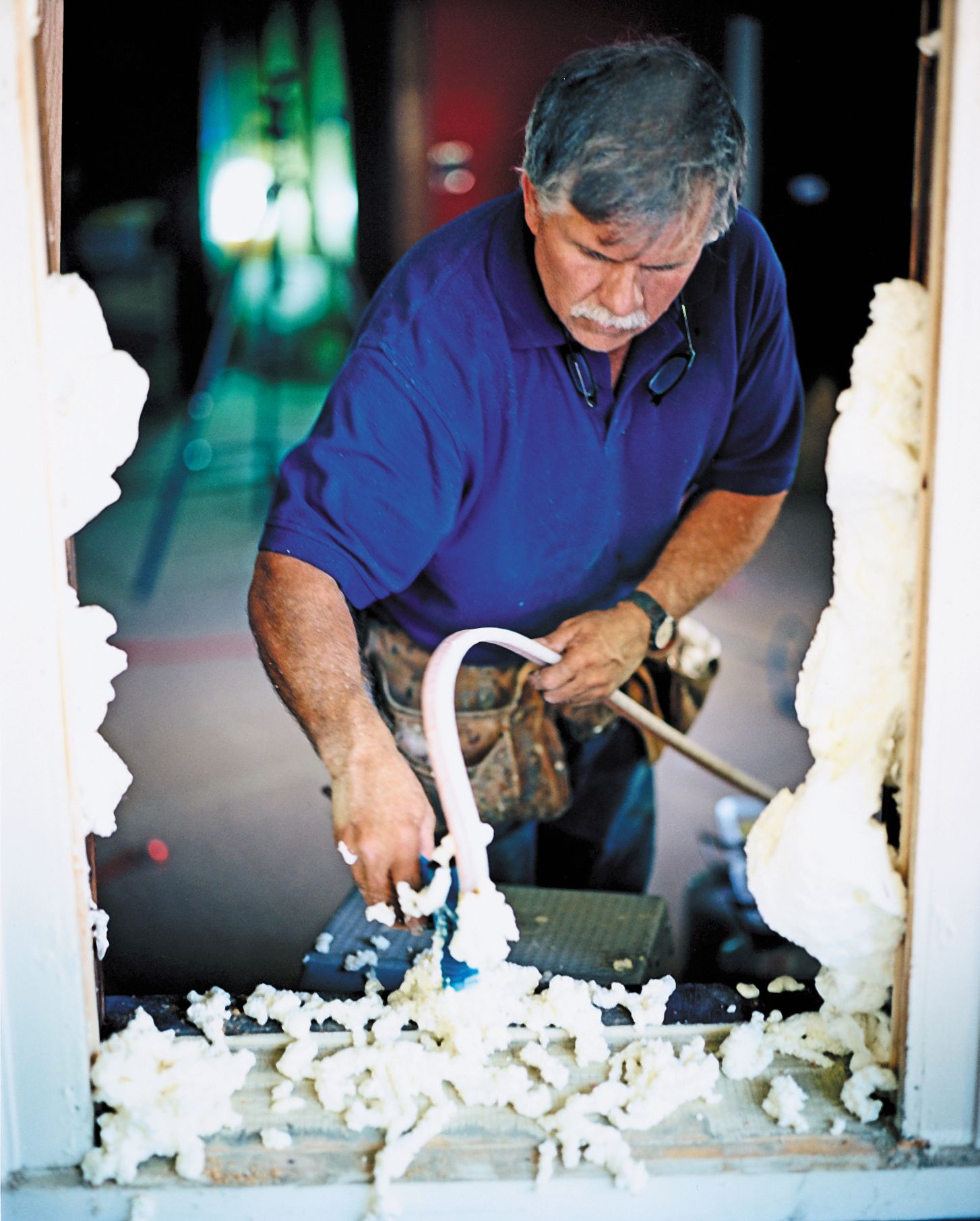
- Shoot the expanding foam into the holes until it begins to ooze out. Tom is using a commercial system, but you can do the same job with foam from a can, like Dow’s Great Stuff.
- Also spray foam into the sash-weight pockets in the side jambs. Allow the excess to harden for at least six hours, then break or cut it off flush before replacing the sash-weight pocket panels.
8. Caulk the Opening
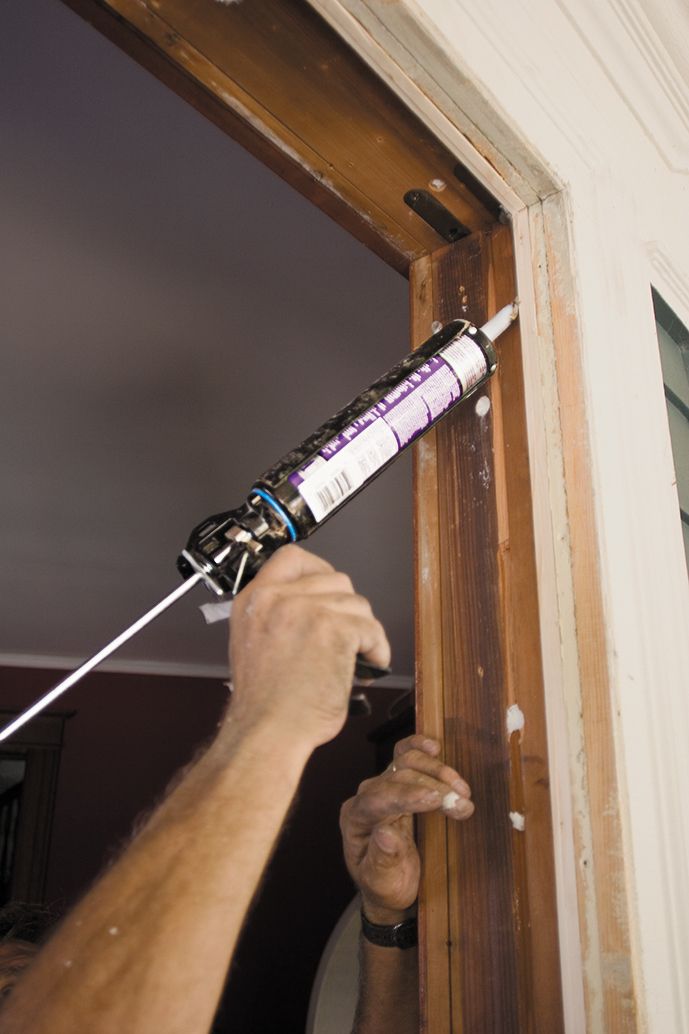
- In preparation for installing the window, apply an elastomeric caulk to the exposed inner face of the exterior casings or to the blind stops on the top and sides of the frame.
- Also apply two continuous beads of caulk along the windowsill.
9. Install the Window
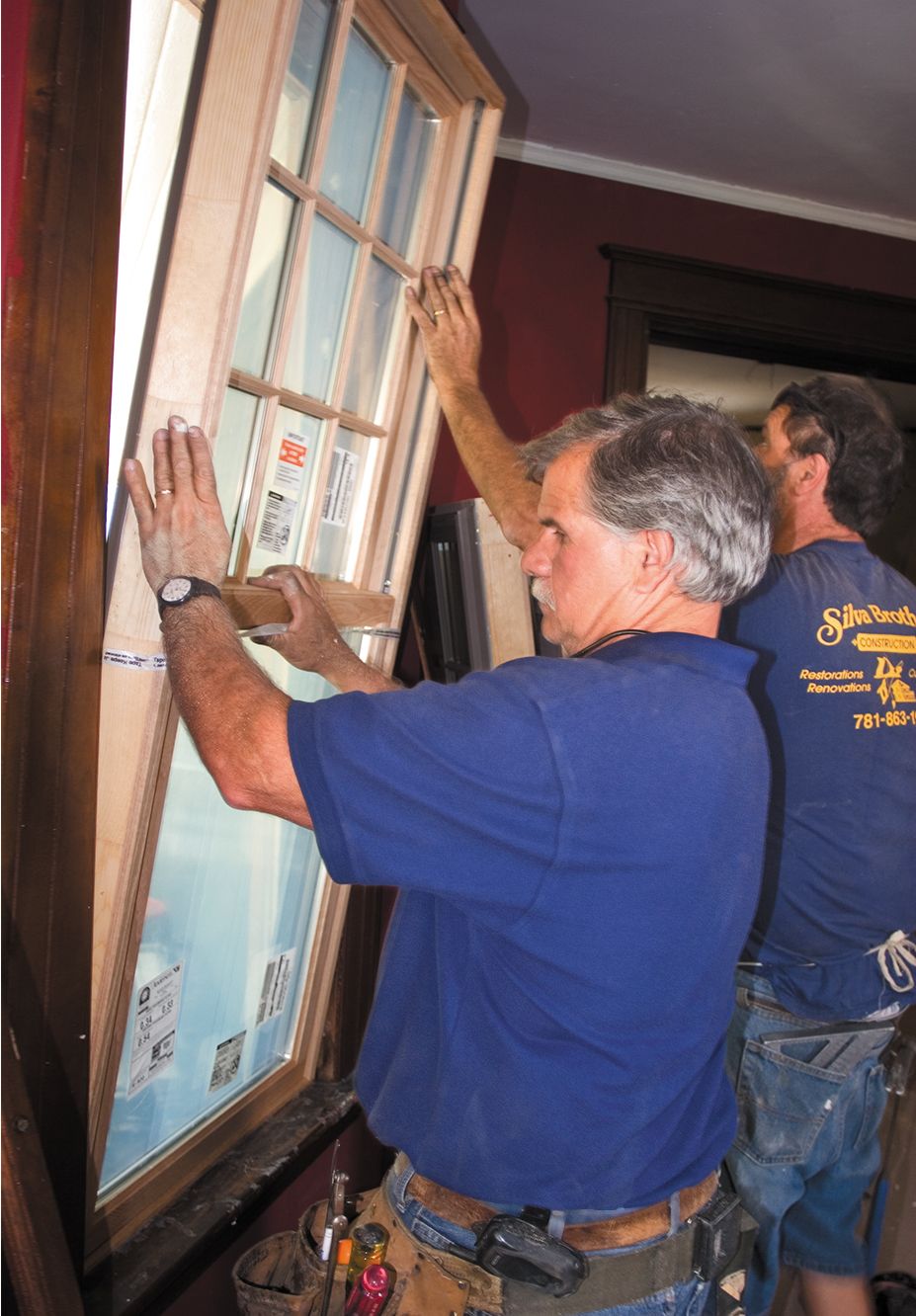
- Working from inside the room, set the bottom of the insert replacement onto the sill, then tip it up into the opening.
- Press the window tight against the exterior casings or blind stops.
10. Fasten It Loosely
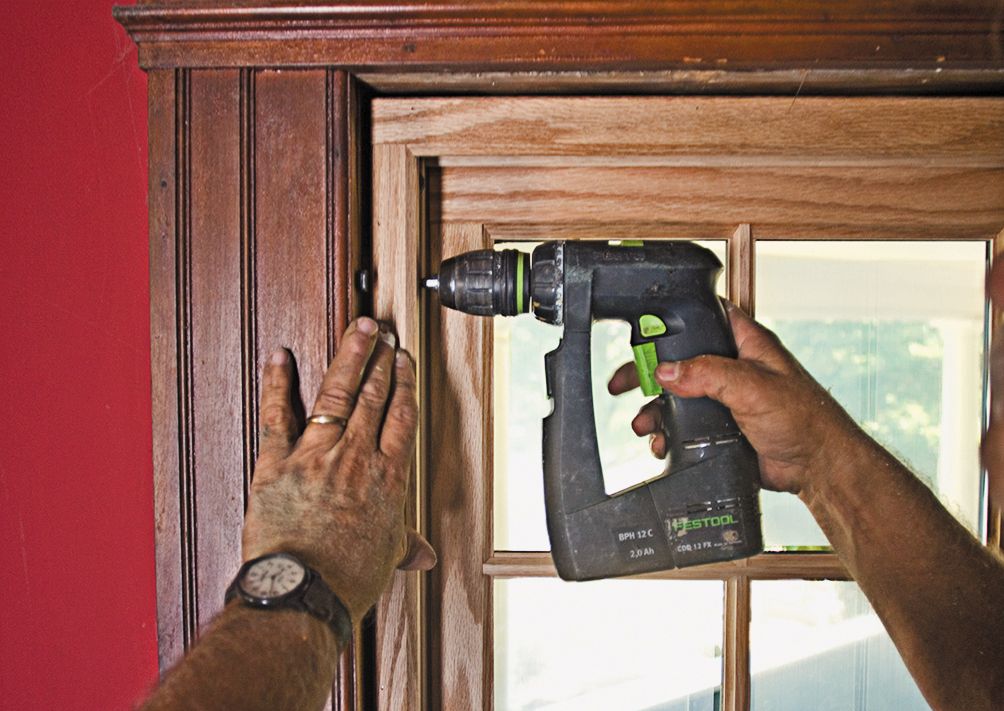
- Hold the window in place with one 2-inch screw driven loosely through the upper side jamb and into the framing. The screw should be in just far enough to allow the window to operate.
- Close and lock the sash.
11. Shim as Necessary
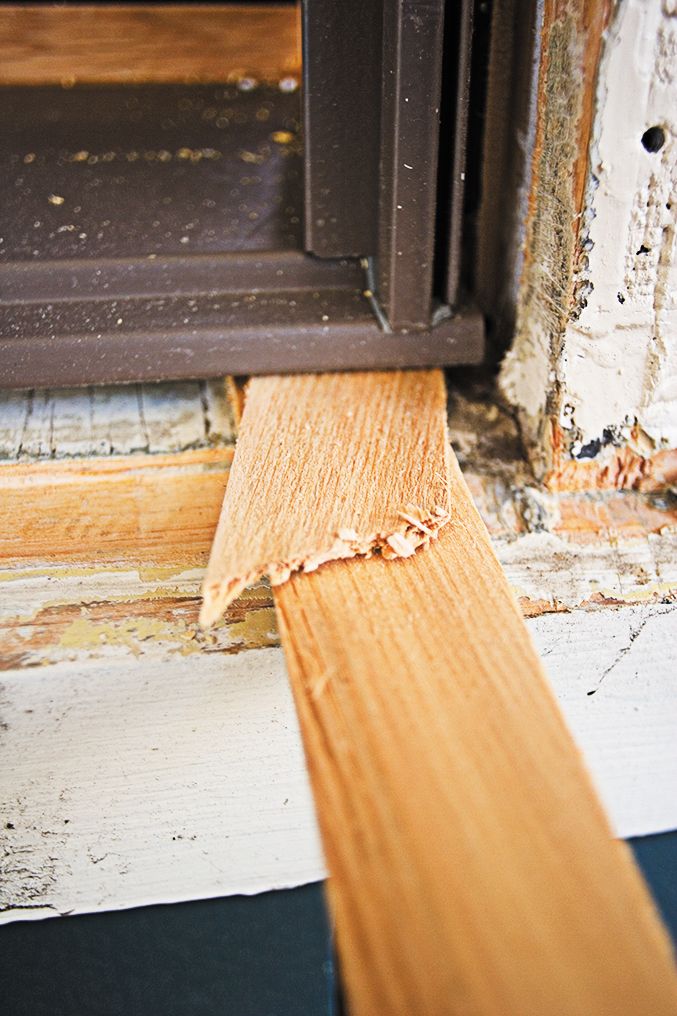
- Adjust the unit by inserting shims under the sill and behind the side jambs until it is centered in the space and opens, closes, and locks smoothly.
- Measure the window diagonally from corner to corner—the measurements should be the same. When the window is square, screw it in place through the predrilled holes.
- To avoid bowing the frame, slip a shim behind the jamb at each screw, then screw through the shim.
- Trim the shims flush with a utility knife.
12. Caulk, Prime, and Paint
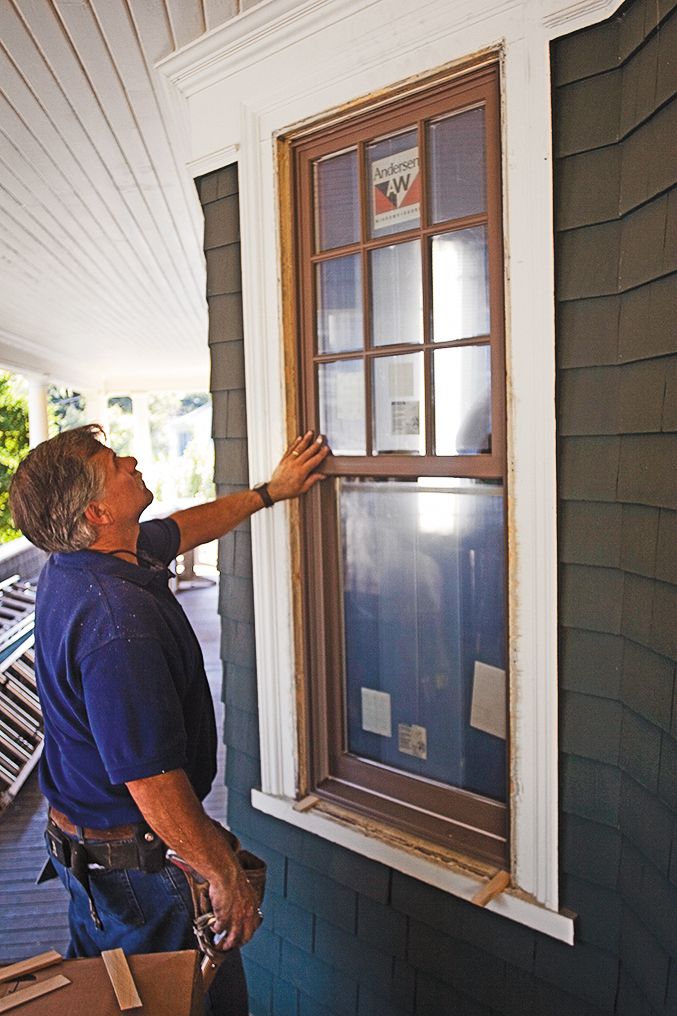
- From the outside, measure the gaps between the window frame and the casing. Fill gaps less than 1/4 inch wide with elastomeric caulk. Anything wider must first be stuffed with foam-rubber backer rod.
- On the inside, fill any gaps around the window with minimally-expanding foam.
- Finish up by reinstalling the stops or adding new ones.
- Then prime and paint, or stain the interior of the window sash and frame.
Window Replacement Parts
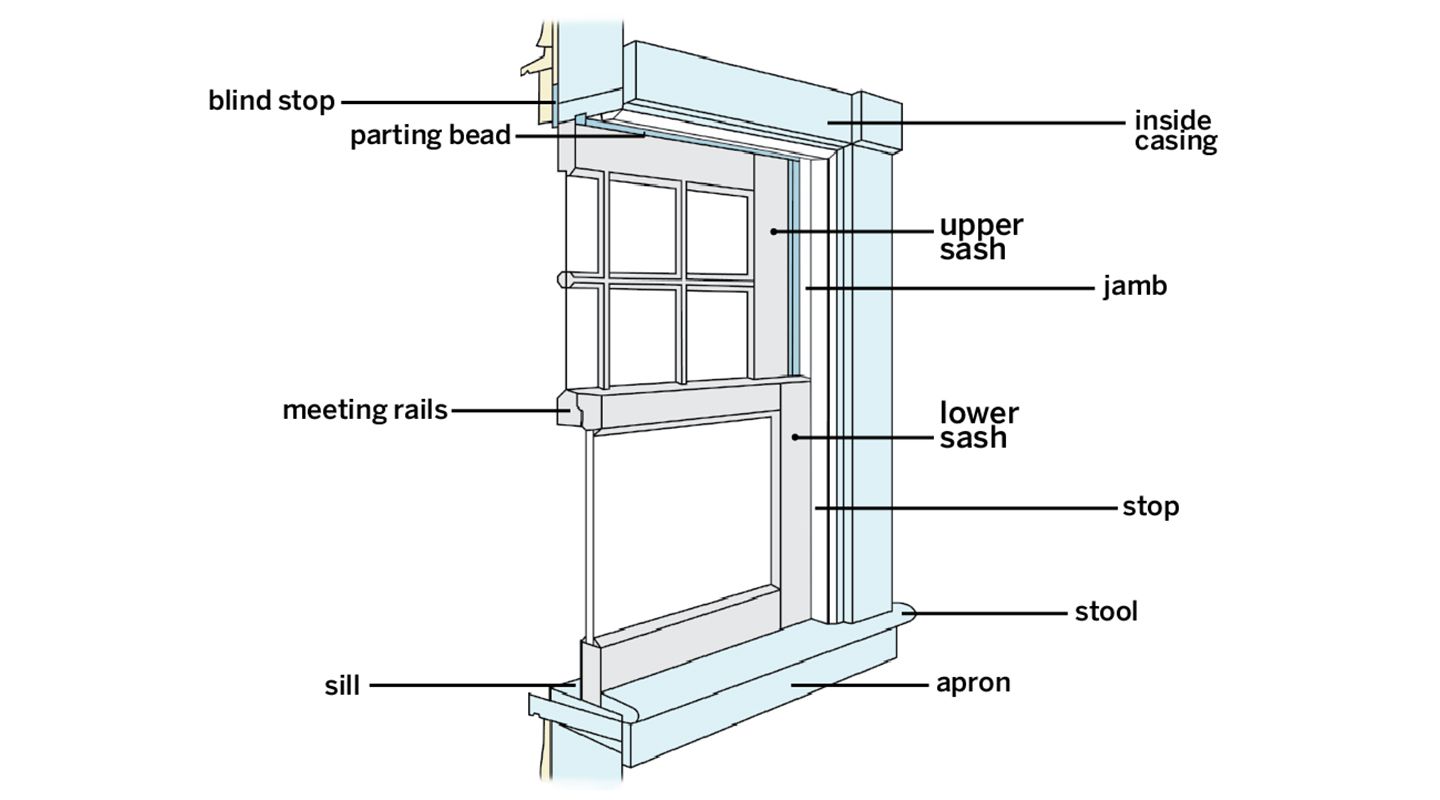
Types of Replacement Windows
There are three basic types of replacement windows: sash kits, insert replacements, and full-frame units. Sash-replacement kits—what Tom found on the Newton house—give an old window frame new movable parts, including jamb liners and sash. The liners are fastened to the side jambs of the window opening, then the sashes are slipped in between. For these to work, the existing window frame must be level and square.
An insert replacement window, such as the kind Tom installed in the Newton house, consists of a fully-assembled window in a ready-to-install secondary frame. Sometimes called a pocket window, an insert replacement slips into the existing opening and is then fastened to the old side jambs. Because you’re adding new jambs and liners, the glass area will be slightly smaller than it was before. These also require the existing frame to be in good repair.
Unlike full-frame windows, which are designed for new construction, replacement windows are made to fit into existing window openings. They’re available in dozens of standard window sizes, from as narrow as 11 ½ inches to as wide as 68 inches, and come in wood, vinyl, fiberglass, vinyl-clad wood, and aluminum-clad wood.
Full-frame replacement windows are similar to inserts, except that they have a complete frame that includes head jamb, side jambs, and sill. These are the only option when the old window frame, sill, or jambs are rotted. To install these, you must strip the window opening down to its rough framing, inside and out, so this job is most often part of a larger remodeling process. However, full-frame replacements do allow you to change the size and shape of the window to better suit your new design.
Our Conclusion
Insert replacement windows are an excellent choice for increasing the functionality and energy efficiency of your home without sacrificing its existing architectural character and charm. Experienced DIYers will likely be able to tackle this project as long as the window is located on the ground floor. However, for upper-story windows or less-experienced DIYers, we recommend hiring a professional window contractor. A pro will ensure that the replacement is properly inserted and sealed for maximum efficiency and visual appeal.
Tools
 Tape measure
Tape measure Hammer
Hammer Flat pry bar
Flat pry bar Putty knife
Putty knife Caulk gun
Caulk gun Cordless drill/driver
Cordless drill/driver Spade bit – 3/8-in.
Spade bit – 3/8-in. Paint scraper
Paint scraper Utility knife
Utility knife
